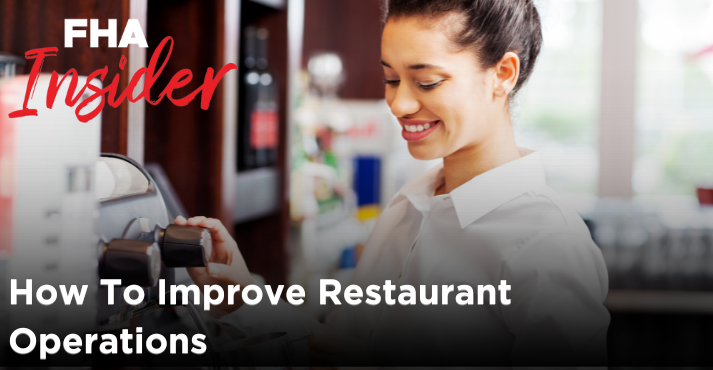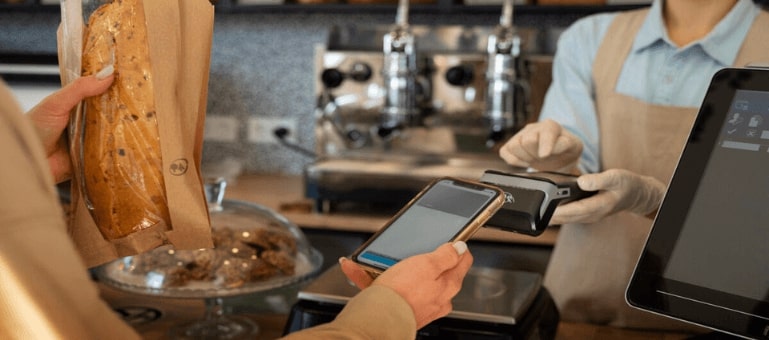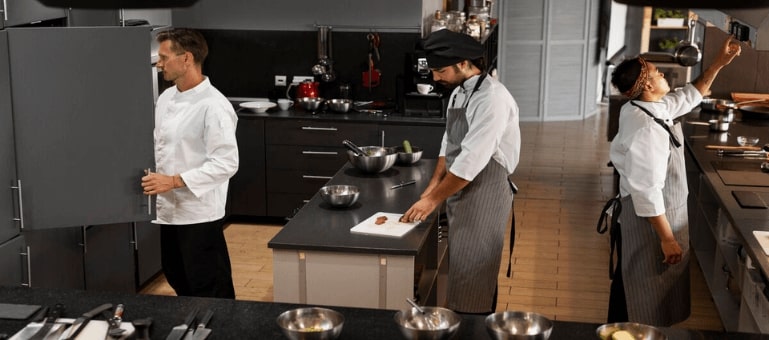
The restaurant industry is an extremely dynamic and competitive environment in which operational efficiency helps drive success. Streamlining restaurant operations helps in enhancing guest experiences, reduces costs, and increases profitability.
By implementing strategic measures to optimize various processes, restaurants can achieve a seamless and satisfying dining experience for their customers while maximizing their business potential.
Let us unveil the significance of operational efficiency and explore the different strategies that can be used to enhance a restaurant’s operations to ensure long-term success.
Conduct a Comprehensive Operations Audit
Identifying Pain Points and Inefficiencies
As the business landscape continues to become competitive, restaurants may face numerous operational challenges which can hinder growth and success. Wondering what some of these challenges maybe?
They can include process inefficiencies, bottlenecks, and other pain points that impede smooth operations and customer satisfaction.
There are multiple ways in which these challenges can be tackled. Restaurant owners and managers must conduct a thorough operations audit which will allow them to identify weaknesses in various processes and implement targeted improvements.
Let us walk you through some strategies for identifying the pain points in a little more detail:
Understanding Operations Audit
An operations audit systematically reviews all aspects of a restaurant’s operations. It evaluates how well the restaurant’s processes align with its goals, standards, and industry best practices.
An operations audit provides a holistic view of the restaurant’s performance by scrutinizing workflows, resources, and communication channels.
Identifying Inefficiencies and Bottlenecks
An operations audit helps in identifying inefficiencies and bottlenecks within the restaurant’s processes.
By analyzing the operational steps, restaurant owners can avoid inefficiencies that lead to wasted resources, delayed service, and compromised customer experience.
In the long run, this can help identify improvement areas along with plans that resolve any inefficiencies.
Addressing Pain Points
Common pain points include slow service, long waiting times, inconsistent food quality, and inadequate communication among staff members.
A well-conducted operations audit can help bring light to these pain points, helping the management take corrective actions and enhance the overall dining experience for their customers.
Operational Challenges
High staff turnover, fluctuations in customer demands, disruptions in the supply chain, and changing regulations are some of the operational challenges the restaurant industry is accustomed to.
An operations audit allows restaurant owners to avoid these challenges by identifying potential issues and developing contingency plans for them.
Gathering Feedback from Staff and Customers
The success of any business, including restaurants, heavily relies on its ability to improve operations and provide exceptional experiences continuously.
By actively seeking insights through employee surveys, customer satisfaction assessments, and listening to stakeholders, restaurants can identify operational issues and seize opportunities for improvement.
Empowering Employee Surveys
Employees are at the forefront of restaurant operations, interacting daily with customers and engaging in various processes.
Conducting regular employee surveys allows staff members to voice their opinions, concerns, and suggestions anonymously. This feedback reveals potential operational challenges that might have gone unnoticed by management.
Enhancing Customer Satisfaction
By actively seeking and analyzing customer satisfaction surveys or reviews, restaurants can gauge the overall dining experience and identify areas of improvement.
Whether it’s related to food quality or service speed, understanding customer preferences and concerns enables the establishment to effectively tailor its offerings to meet customer expectations.
Listening to Stakeholders
Wondering why it is important to listen to your stakeholders?
Restaurants can demonstrate that they value the perspective of their stakeholders by being attentive to their opinions and feedback.
This helps in cultivating a culture of open communication and collaboration, allowing the organization to tackle operational issues collectively.
Identifying Operational Insights
Insights from customers and employees might include:
- Identifying potential bottlenecks in workflows.
- Highlighting areas where staff training is needed.
- Recognizing new opportunities for menu innovation.
With this information, restaurants can develop targeted action plans to address operational challenges and streamline processes.
Streamline Ordering and Service Processes
Implementing a POS System

In the fast-paced restaurant industry, efficient order processing and seamless service are critical to customer satisfaction and loyalty.
Adopting a Point of Sale (POS) system offers numerous benefits that streamline order processing, reduce errors, and improve overall service efficiency.
Streamlined Order Processing
By replacing traditional paper-based order-taking methods with a digital system, staff can swiftly input orders directly into the system, reducing the time it takes to relay orders to the kitchen or bar.
This streamlines the communication between front-of-house and back-of-house staff, minimizing delays and potential misunderstandings.
Real-time Order Management
POS software enables real-time order management, providing instant updates on order status, inventory availability, and customer preferences. As soon as an order is placed, the kitchen staff can access it immediately.
This real-time visibility ensures that all orders are efficiently processed and delivered to customers promptly.
Error Reduction
Manually inputting orders can lead to human errors, such as incorrect items, quantities, or pricing.
Minimizing the likelihood of incorrect orders and preventing customer dissatisfaction can be achieved by using a POS system that automates the ordering process and ensures accurate data entry.
Enhanced Service Speed
A POS system reduces the time spent taking orders and processing payments. Staff can instead focus more on attentive customer service, addressing inquiries, and ensuring a smooth dining experience.
Faster service enhances customer satisfaction and can increase table turnover, contributing to higher revenue potential.
Embracing Contactless Ordering and Payment
In the wake of the COVID-19 pandemic and the growing demand for streamlined dining experiences, contactless ordering and payment options have emerged as game-changers in the restaurant industry.
These innovative solutions offer numerous advantages, including enhanced guest safety, reduced wait times, and improved order accuracy.
Enhanced Guest Safety
Contactless ordering and payment options significantly reduce physical interactions between staff and customers, minimizing the risk of viral transmission.
Guests can access menus and place orders using their smartphones via QR code menus, creating a touch-free experience.
Reduced Wait Times
Traditional order-taking methods lead to wait times for customers longer. Contactless ordering enables placing orders directly from devices, eliminating the need to flag down servers or wait in line.
This efficiency in order placement ensures that customers receive prompt and attentive service.
Improved Order Accuracy
Manual order-taking can lead to miscommunications and errors. With contactless ordering, customers directly input their preferences, reducing the chances of mistakes.
This results in a smoother and more precise execution of customer requests, leading to higher satisfaction rates.
Convenience and Flexibility
Contactless ordering and payment options offer convenience for customers. Customers can browse digital menus at their own pace, customize their orders, and split bills effortlessly using mobile payment solutions.
This flexibility helps cater to preferences and dietary restrictions, which enhances the dining experience for customers.
Optimize Inventory Management
Using Technology for Inventory Tracking
Leveraging technology, such as inventory management software, restaurants can monitor stock levels, reduce waste, and ensure timely ingredient replenishment.
Real-Time Inventory Updates
Inventory management software provides real-time updates on stock levels, allowing restaurant owners and managers instant visibility into their inventory status.
This information empowers decision-making regarding ingredient orders, ensuring that essential items are replenished before running out and preventing overstocking.
Precise Ordering and Minimized Waste
Inventory management software is used by restaurants to accurately forecast ingredient consumption based on past data and demand patterns.
This prevents excessive purchases, and restaurants can effectively control costs and reduce unnecessary waste.
Streamlined Stock Monitoring
Inventory management software streamlines stock monitoring, automating tasks like tracking expiration dates and managing restocking schedules.
This automation saves time and reduces the likelihood of human errors in inventory management, creating a more efficient and error-free system.
Centralized Data Management
Technology-based inventory management centralizes all ingredient stock levels, purchases, and usage data. This simplifies data analysis, enabling better insights into inventory trends and allowing for more informed decisions.
Managers can identify areas where waste can be reduced and implement strategies to optimize stock control.
Streamlining Supplier Relationships
Establishing solid relationships with suppliers is essential in securing favorable terms, negotiating competitive pricing, and maintaining consistent product quality.
Reliable Timely Deliveries
Strong relationships with suppliers create a sense of mutual trust and understanding. When restaurants prioritize these partnerships, suppliers are more likely to prioritize their orders, resulting in timely deliveries.
This consistency in supply ensures that restaurants can meet customer demands without interruptions or delays, enhancing overall operational efficiency.
Negotiating Favorable Terms
Maintaining strong supplier relationships empowers restaurants to negotiate more favorable terms and pricing. Suppliers are more willing to accommodate pricing and delivery preferences for valued partners.
By securing competitive pricing, restaurants can optimize their cost structure and enhance profitability without compromising product quality.
Consistent Product Quality
Suppliers who value the relationship with their customers are more likely to provide top-tier goods, ensuring that restaurants can maintain the consistency and excellence of their offerings. Consistent product quality builds customer loyalty and fosters a positive reputation.
Effective Supplier Management
Strong relationships facilitate effective supplier management. Regular communication with suppliers helps restaurants stay updated on product availability, industry trends, and challenges enabling swift adaptation to market fluctuations or unexpected circumstances.
Invest in Staff Training and Development

Providing Comprehensive Training Programs
In the restaurant industry, a business’s success relies heavily on its staff’s skills, knowledge, and customer service abilities.
Comprehensive training of restaurant employees is important, as it enhances their expertise, builds confidence, improving the overall customer experience.
Skill Development and Expertise
Comprehensive training programs equip restaurant staff with the necessary skills and knowledge of restaurant operations, such as food preparation techniques and serving protocols.
Skill development improves the staff’s competence and helps deliver a seamless dining experience.
Elevating Customer Service
Well-trained staff are better equipped to understand and anticipate customer needs. By enhancing their customer service abilities through training, restaurant employees can deliver personalized and attentive interactions with diners.
This level of service fosters repeat business and positive word-of-mouth referrals.
Improving Service Standards
Consistent and comprehensive training helps establish and maintain high service standards across all aspects of restaurant operations.
From greeting customers warmly to handling complaints gracefully, the well-trained staff ensures that every interaction reflects the restaurant’s commitment to exceptional service.
Boosting Staff Confidence
Training programs not only impart valuable knowledge but also boost staff confidence.
Employees who feel proficient in their roles are more likely to handle challenging situations easily. Confident staff members positively influence the restaurant’s atmosphere.
Upskilling Initiatives for Growth
Comprehensive training programs can also include upskilling initiatives that enable staff to take on additional responsibilities and advance their careers within the restaurant industry.
By offering opportunities for growth and development, restaurants can retain talented employees, reduce turnover, and build a loyal and dedicated workforce.
Promoting a Positive Work Environment
By recognizing employee efforts, promoting teamwork, and creating a supportive work environment, restaurants can elevate staff motivation and productivity.
Increased Staff Morale
A positive work culture creates a sense of belonging and appreciation among employees.
When staff members feel valued and supported, they are more motivated to perform their best.
High morale leads to a happier, engaged workforce, increasing job satisfaction and reduced turnover.
Enhanced Employee Retention
Recognizing employee efforts and promoting teamwork contribute to higher employee retention rates. When staff feel appreciated for their hard work and see the value of teamwork, they are more likely to stay committed to the restaurant’s success.
Lower turnover reduces hiring and training costs, contributing to improved operational efficiency.
Improved Productivity
A positive work environment encourages staff to collaborate and support one another, fostering teamwork and effective communication.
Employees are more likely to work towards common goals, leading to improved productivity and streamlined operations.
Positive Customer Experience
Positive work culture and strong teamwork directly impact the customer experience. Happy and motivated staff provide better customer service, which leads to satisfied customers who are more likely to return and recommend the restaurant to others, contributing to long-term business growth.
Embrace Technology for Marketing and Guest Engagement
Utilizing Social Media and Online Marketing
It is reported that 88% of customers trust the content and reviews they see on social media regarding a restaurant.
Moreover, 32% of people visit a restaurant’s website after seeing its content on social media.
This shows that social media platforms offer restaurants a vast and diverse audience to connect with.
Restaurants can reach potential customers through targeted restaurant advertising strategies and engaging content. This expanded reach opens up new opportunities for growth and customer acquisition.
Promoting Special Offers
Online marketing allows restaurants to quickly and effectively promote special offers, discounts, and seasonal promotions.
Social media campaigns can create excitement and urgency, encouraging customers to visit the restaurant and take advantage of limited-time deals. This not only boosts foot traffic but also increases sales and revenue.
Building Brand Identity
Social media provides an interactive platform for restaurants to build and showcase their unique brand identity. By curating a cohesive and visually appealing online presence, restaurants can stand out from competitors and leave a lasting impression on customers.
Customer Engagement and Interaction
Social media platforms facilitate direct communication with customers in real time. Restaurants can respond to inquiries, address feedback, and converse with their audience.
This two-way interaction fosters a sense of community and demonstrates that the restaurant values its customers’ opinions, leading to increased loyalty and customer satisfaction.
Implementing Customer Loyalty Programs
Customer loyalty programs have become integral, offering various benefits to businesses and customers.
By implementing reward schemes, loyalty points, and customer-centric initiatives, restaurants can foster repeat business, increase customer retention, and drive revenue growth.
According to Paytronix and PYMNTS’ 2022 Restaurant Friction Index, 57% of restaurants offer loyalty programs, and 41% of customers revealed that these loyalty programs encourage them to visit these restaurants.
Let us look at some more benefits of loyalty programs:
Fostering Repeat Business
Customer loyalty programs incentivize customers to return to the restaurant for future visits.
By offering rewards and benefits for frequent visits or purchases, restaurants encourage customers to choose them over competitors. This repeat business creates a steady stream of loyal customers.
Increasing Customer Retention
Customers in a loyalty program are more likely to feel valued and appreciated by the restaurant.
This sense of exclusivity and recognition builds emotional connections, reducing the likelihood of customers switching to competitors and increasing their likelihood of returning.
Enhancing Customer Lifetime Value
Engaging customers through reward programs and offering personalized benefits leads to higher spending and more frequent visits.
Over time, loyal customers contribute substantially to the restaurant’s revenue, making them a valuable asset for sustained growth.
Data-Driven Insights
Loyalty programs provide valuable data insights that help restaurants understand customer preferences and behaviors.
Analyzing customer behavior and spending patterns allows restaurants to tailor their offerings and promotional activities to cater to specific customer segments.
Creating Emotional Connections
Loyalty programs create emotional connections between the restaurant and its customers. Customers feel appreciated and valued, resulting in a stronger sense of loyalty and brand affinity.
Emotional connections go beyond transactional relationships; building a genuine bond enhances customer satisfaction and loyalty.
Conclusion
To summarize everything we have discussed so far in the quest for sustained success and customer satisfaction, restaurants must prioritize operational efficiency.
The critical approaches to enhancing restaurant operations revolve around business optimization, enhancing guest experiences, and embracing the future of restaurant operations.
One can thrive and build a loyal customer base by optimizing processes, enhancing guest experiences, and embracing the future of restaurant operations.
Achieving operational excellence satisfies customers and maximizes profitability, which in turn allows restaurants to invest in continued growth and innovation for long-term success.








